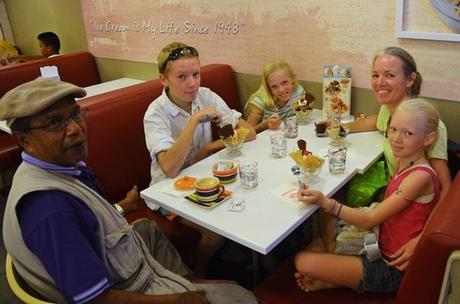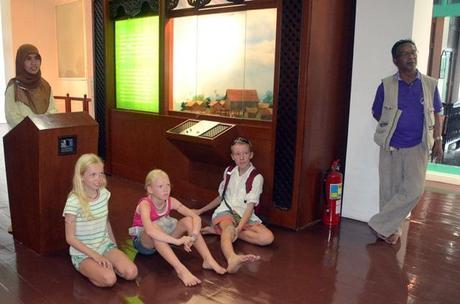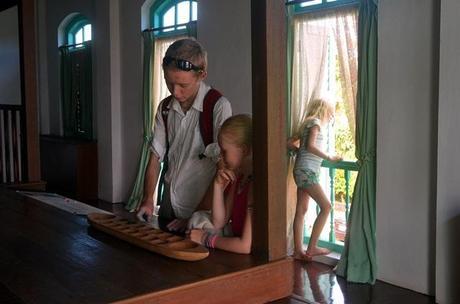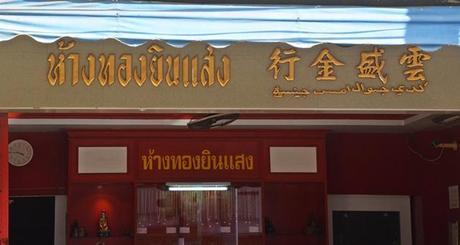
The more time we spend in Phuket, the more I like the quiet village that was our introduction to Thailand. Ban Chebilang is just a few miles outside the commercial center of Satun, and the home of the shipyard where Totem hauled out in November. It wouldn't surprise me to learn that the PSS Shipyard is the largest single employer, although there might be more fishermen than yard workers in town.
There were a few days where the kids and I couldn't help move projects on Totem forward, so we picked one and went off exploring instead of getting in Jamie's way. I had met a taxi driver at the ferry terminal after completing clearance formalities when we arrived. The charming Mr. Sam became not only our driver for the afternoon, but self-appointed chaperone. His English was limited, but it was better than our three words of Thai! It completely charmed me that he wanted to shepherd us from place to place and make sure we didn't have any problems, and had a good time.
Our first stop was the town's telecom shop to sort out local internet access. Nearby was a Swensen's ice cream shop. I really couldn't believe my eyes! I grew up just a few blocks down Russian Hill from the original shop up on Hyde street in San Francisco. There was no question: we had to go. This was before I knew that there would be at least one Swensen's in every Thai population center, but who cares! Sam let us get him a coffee and we indulged in triple chocolate brownie sundae heaven (about $1.50 each). So good.

Not to downplay the importance of ice cream (especially for cruising kids who don't have a freezer on the boat), but our primary destination was a museum in Satun. Housed in a grand home constructed in the first years of the 20th century in honor of a visiting Thai king who never arrived, many of the rooms are preserved like time capsules, from the carved wooden furnishings to burnished metal tea sets and serving dishes. Other rooms of the two story structure are conventional museum displays and dioramas, offering a great introduction to this culturally and linguistically unique corner of Thailand.
The staff was incredibly gracious, and while they spoke very little English, we were personally guided through the entire museum with lots of smiles... and pushing of buttons that turned on English-language audio about the different dioramas and sites.
Shoes are not permitted inside. This is perfectly natural for the Totem crew, who would find it unsettling to enter a home and keep their shoes on.

We were the only visitors during the hour and a half of our visit.

Afterwards, I hoped to pick up some veggies before returning to Chebilang. Unfortunately, it was just a morning market. The kids counted 18 cats in a short walk past maybe a dozen little stalls.

There's a blurry cultural line along the border of Malaysia and Thailand. This area is still mostly Muslim, so it really doesn't feel very different than its neighbor to the south: same headscarves, same mosques, even a lot of the same language. Thai is introduced, but the local dialect, Yawi, is very similar to the Malay spoken in nearby Kedah province. Except... it's often written in Arabic-like script, so it's a little harder to pick up.
This storefront has signage in Thai, Chinese, and Yawi, but nothing we can recognize to sound out.

Back in Chebilang, I ended a number of afternoons with a run though the fields once the sun was lower, and the heat of the day beginning to fade. The dirt roads got a little sloppy after the rain, but the views are hard to beat. Cows grazing mixed with palm fields and fallow rice paddies, surrounded by shady rubber plantations. I would wind around and between them, past makeshift soccer fields and children spinning tops on paved stoops. Turning through the houses on the fringe to head back to the shipyard, children send me off in high voice with what are becoming my two favorite words in the English language: "Hello Mister!"

